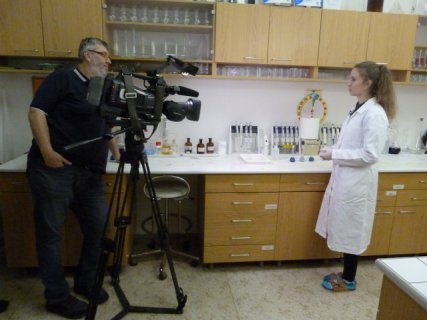Talking about pollution on a global level is important, but for communities, it is equally important to understand and discuss how pollution is affecting their local environment. Protecting areas of local natural beauty is crucial in local communities, but this is difficult to achieve if people don’t know about the environmental threats that their local area faces. Klára Vaculíková from Brno University technology designed a project to engage school classes who helped to monitor levels of the water pollutant phosphorus in the Moravský kras which is a spectacular natural limestone feature to the north of Brno. This project was funded as part of a co-creation call from the ORION partner South Moravian Centre for International Mobility, JCMM.
Two primary schools were engaged as part of their environmental protection classes. Although much of the Moravský kras is underground, the children traveled 2 different surface streams that fed into the karst so that they could collect data from different locations to be able to compare their results. The school classes went and performed simple colorimetric tests for phosphates which gave them a quantitative readout of the levels of pollution. The data collected not only helped the children learn but was useful for the researchers to see which of the streams was more polluted.
These results themselves would not have been as important to the children had they not been put into the proper context. Therefore, in their classes, they learned about where phosphorus and phosphates come from and how they influence the environment. This was then linked to their own well-being in terms of their local environment and food-chains.
Both the practical work and the appropriate supporting information were essential. The information that the children received allowed them to understand the data that they collected in terms affected them personally. By sampling the streams in person, the information they learned in class took on a whole new significance and became something real and tangible rather than just another fact to remember.
The data collected by the children was extremely valuable as a teaching resource, however the project was planned so that the results could used and interpreted by researchers. In fact, they appear in Klára Vaculíková masters thesis. Engaging school children in research in this way adds an extra layer to the educational value of the project. There are not many school age children that can say they have been a part of a real scientific study.
The novelty and value of this project caught the attention of the national media and led to Klára Vaculíková and her thesis supervisor Assistant Professor Jitka Malá being interviewed on the prime-time news of Czech TV. The combination of several different stakeholders coming together for a project that benefits both academia and the local residents of Brno was a resounding success and it was important for the public to hear about it.
More information
Please get in touch with with Ing. Michael Doležal at JCMM if you would like to know more about this inspiring story.
Further reading
- Interview with Klara Vaculikova on Czech Television
- New ways to opening up life sciences research
- Open Science roundtable debate in Czech Republic
- Ten regional Open Science projects receive grants from ORION
- Regional Open Science projects â Public Peer review is now open
- Ten grants to innovative Open Science projects for university students in Czechia
